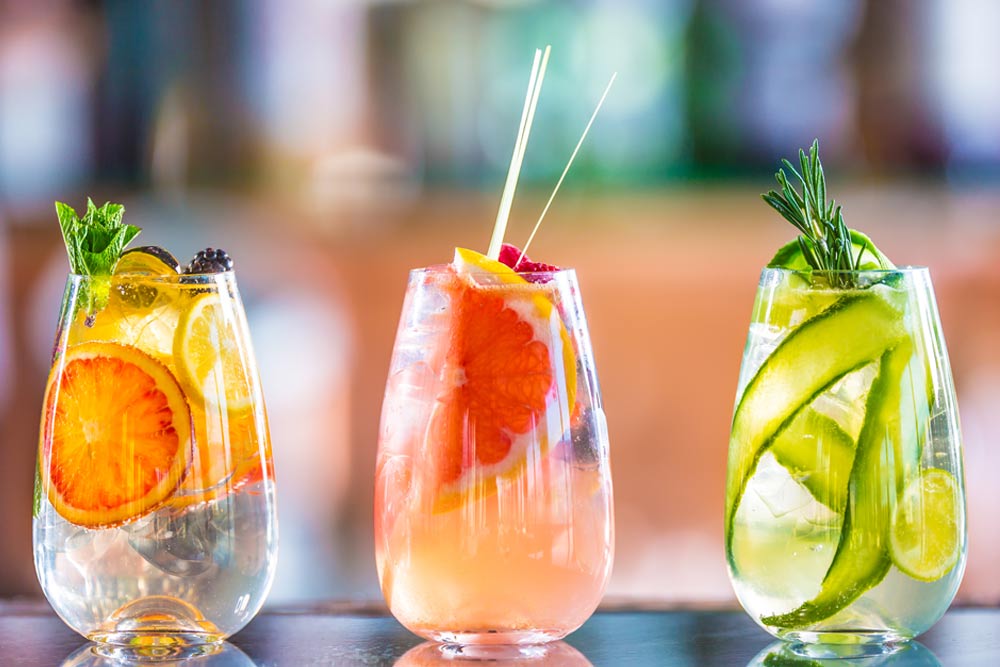Mocktails, with their refreshing and vibrant compositions, offer a delightful alternative to traditional cocktails. These alcohol-free beverages are not only a hit at parties and gatherings but also serve as a canvas for creativity and experimentation. One essential element that adds flair to mocktails is food color. In this blog, we’ll dive into the captivating world of food colors for mocktails, exploring their role in enhancing visual appeal, creating thematic drinks, and delighting the taste buds.
The Importance of Visual Appeal
Visual appeal is crucial for attracting attention, communicating effectively, and enhancing engagement in various contexts, including design, marketing, and communication.
First Impressions Matter
In the realm of beverages, visual appeal is just as important as taste. The vibrant colors of mocktails entice the senses and set the stage for a memorable drinking experience. Food colors play a crucial role in achieving the desired aesthetic, transforming ordinary drinks into eye-catching masterpieces.
Creating Thematic Drinks
Crafting thematic drinks involves designing beverages that align with specific themes, enhancing ambiance and guest experience at events or venues.
Colour Coordination
Food colors allow mixologists and home bartenders to create themed mocktails that align with the mood or occasion. From pastel hues for springtime gatherings to bold and bright colors for summer parties, the possibilities are endless. Whether it’s a vibrant blue mocktail for a beach-themed bash or a deep red concoction for Valentine’s Day, food colors set the tone for the festivities.
Types of Food Colors for Mocktails
Food colors for mocktails include natural options like beetroot juice for red, spirulina for green, turmeric for yellow, butterfly pea flower for blue, and activated charcoal for black.
Natural vs. Synthetic
When it comes to food colors for mocktails, there are two main categories: natural and synthetic.
Natural Food Colors: Derived from plant-based sources such as fruits, vegetables, and spices, natural food colors offer vibrant hues without the need for artificial additives. Ingredients like beetroot, turmeric, and spirulina provide rich and vivid colors while adding nutritional benefits to mocktails.
Synthetic Food Colors: Synthetic food colors are carefully formulated additives that provide intense and stable colors. While they may lack the nutritional benefits of natural alternatives, synthetic food colors offer a wide range of shades and can be precisely controlled for consistency.
Popular Food Colors for Mocktails
Popular food colors for mocktails include vibrant hues like red (from cranberry juice or grenadine), green (from lime or mint), yellow (from pineapple juice), and blue (from blue curaçao or blueberries).
Red Food Color: Often associated with passion and energy, red food color adds drama and flair to mocktails. Whether it’s a classic Shirley Temple or a strawberry daiquiri-inspired creation, the bold hue of red food color is sure to make a statement.
Blue Food Color: Symbolizing tranquility and serenity, blue food color lends a cool and refreshing vibe to mocktails. From tropical blue lagoons to icy blue lemonades, this hue evokes images of clear skies and crystal waters.
Yellow and Orange Food Colors: Radiating warmth and sunshine, yellow and orange food colors infuse mocktails with a burst of energy and vitality. Whether it’s a zesty citrus punch or a mango-infused delight, these hues brighten up any beverage.
Green Food Color: Symbolizing freshness and vitality, green food color adds a touch of nature to mocktails. From verdant mojitos to refreshing cucumber coolers, the vibrant hue of green food color enhances the visual appeal of drinks while hinting at their natural ingredients.
Experimentation and Creativity
Experimentation and creativity in food coloring can involve natural sources like beet juice for red, turmeric for yellow, spirulina for green, and butterfly pea flower for blue, offering unique and healthy alternatives.
Mixing and Matching
The beauty of using food colors in mocktails lies in the endless possibilities for experimentation and creativity. Mixologists can combine different colors and flavors to create unique and visually stunning beverages that cater to a variety of tastes and preferences.
Balancing Color and Flavor
While visual appeal is essential, it’s equally important to ensure that the flavors of mocktails are well-balanced and harmonious. Too much food color can overpower the taste of the drink, so it’s essential to use colors judiciously and in moderation.
Conclusion: Cheers to Colorful Creations
Food colors play a vital role in elevating the visual appeal of mocktails, transforming them into works of art that delight the senses. Whether it’s a vibrant red concoction for a romantic evening or a cool blue drink for a beachside getaway, food colors add flair and excitement to every sip. With a dash of creativity and a splash of color, mocktail enthusiasts can unleash their imagination and craft drinks that are as visually stunning as they are delicious. Cheers to colorful creations and unforgettable moments shared over a glass of vibrant mocktail!
